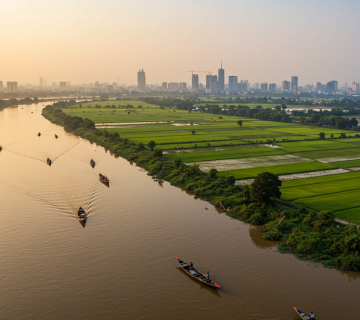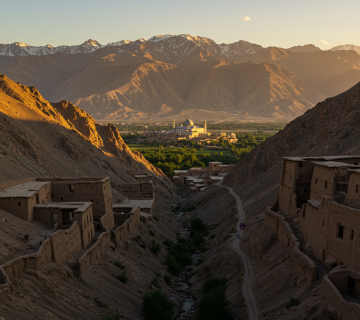South Korea’s Geography and Its Strategic Role in East Asia
Situated in the southern half of the Korean Peninsula, South Korea occupies a geographic position that extends far beyond mere physical borders. As a country bordered by powerful neighbors—China to the west, Japan to the east, and close proximity to Russia—its geography defines much of its security posture, diplomatic outreach, and economic infrastructure. In this article, we explore how South Korea’s natural and geopolitical landscape shapes its regional and global role.
1. Geopolitical Position in Northeast Asia
South Korea shares its only land border with North Korea, separated by the heavily fortified Demilitarized Zone (DMZ). To its east lies the Sea of Japan (East Sea), to the west the Yellow Sea, and to the south the Korea Strait. These waters not only provide trade routes but also situate the country between key players in global affairs.
Seoul, the capital, is only 50 km from the DMZ, emphasizing the constant proximity to geopolitical tension. Yet, this very location allows South Korea to serve as a bridge between continental Asia and the Pacific powers.
2. Physical Landscape: Mountains, Plains, and Coastal Access
Roughly 70% of South Korea is mountainous, primarily shaped by the Taebaek and Sobaek ranges running north to south. These mountains influence climate patterns, river systems, and even settlement structures. The eastern coast is more rugged, while the western and southern regions feature fertile plains and broad coastlines.
This terrain supports agricultural production in the lowlands and has fostered regional economic hubs near the coasts, including major ports like Busan and Incheon.
3. Climate and Seasonal Variation
South Korea experiences a four-season climate—harsh winters, humid summers, vibrant springs, and colorful autumns. This diversity impacts everything from agriculture to energy consumption. The summer monsoon, or jangma, brings critical rainfall, while also posing natural disaster risks like landslides and floods.
These seasonal patterns influence daily life, architecture, traditional clothing (like hanbok), and even cultural festivals. They also necessitate robust planning for climate adaptation in infrastructure and urban development.
4. Maritime Importance and Trade Connectivity
South Korea’s access to three major bodies of water provides significant advantages for global trade. Ports such as Busan (the world’s sixth busiest container port), Incheon, and Ulsan serve as vital economic arteries, connecting Korean industry to global markets.
The Korea Strait is a crucial shipping lane, linking the Pacific with the East China Sea. South Korea’s advanced naval infrastructure ensures not only economic flow but also maritime security in this heavily trafficked corridor.
5. Proximity to Global Powers and Security Implications
Geographically, South Korea is positioned amid some of the world’s major powers: China, Japan, Russia, and the United States via its Pacific military presence. This proximity creates both opportunity and tension.
The U.S. maintains a military presence in South Korea, reinforcing a security alliance that dates back to the Korean War. Meanwhile, the country balances complex diplomatic relationships with China and Japan, influenced heavily by historical and territorial issues.
Thus, geography situates South Korea as both a buffer and a connector, amplifying its relevance in security dialogues and multilateral platforms.
6. Regional Integration and Infrastructure Networks
Due to its strategic location, South Korea actively invests in regional connectivity. It is a key participant in projects like the Trans-Korean Railway (envisioned to connect with the Trans-Siberian Railway via North Korea) and trans-Asian shipping routes.
Additionally, the country’s numerous free trade agreements (FTAs) are facilitated by its coastal access and position along vital East Asian trade corridors. These agreements, bolstered by digital infrastructure, further enhance South Korea’s role as a logistic and technological hub.
7. Environmental and Urban Planning Considerations
The country’s rugged topography and dense population require careful urban planning. Cities are often built in valleys or along the coasts, requiring advanced engineering to mitigate risks like floods or earthquakes. Environmental conservation is also a growing focus, as urban expansion threatens biodiversity in mountainous and coastal areas.
The government’s push toward “smart cities” integrates technology with geographic realities, ensuring sustainable urban development while enhancing disaster resilience.
🧭 Conclusion
South Korea’s geography is not just a backdrop—it is a decisive factor in its identity, strategy, and global standing. From towering mountains to bustling ports, and from the DMZ to international shipping routes, its physical position shapes its economic aspirations and security imperatives.
Understanding South Korea’s geography is essential for appreciating its dynamic role in the evolving landscape of East Asia. As the world becomes more interconnected, this relatively small peninsula continues to exert outsized influence thanks to its strategic location and adaptive resilience.





No comment